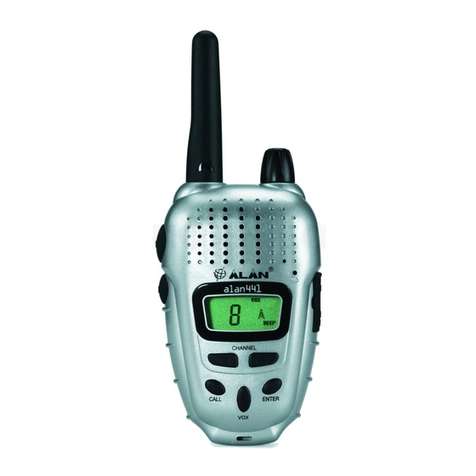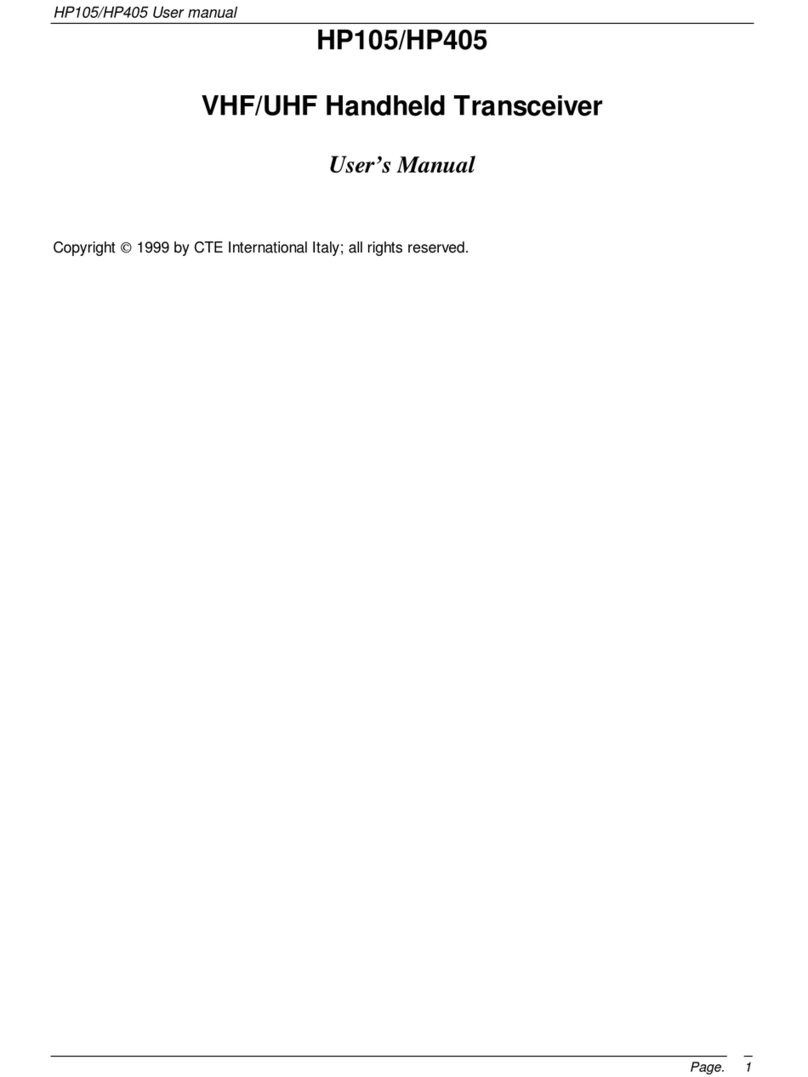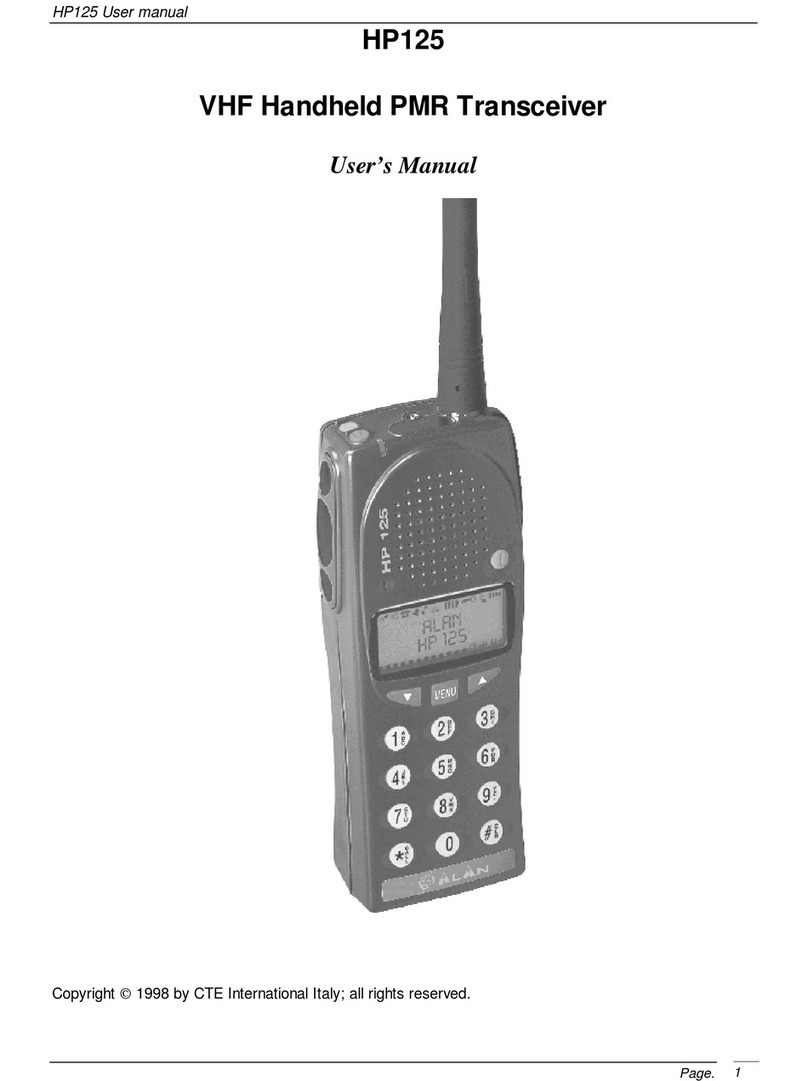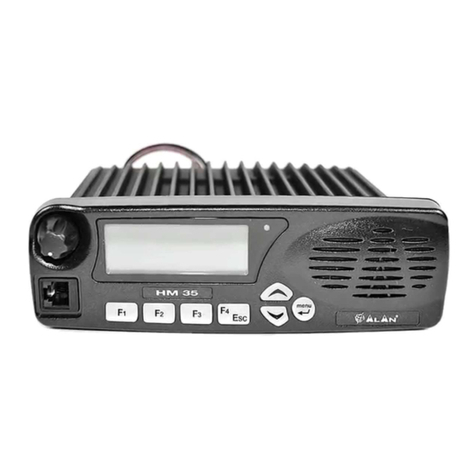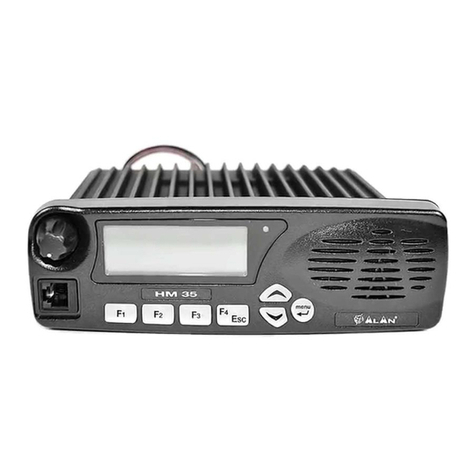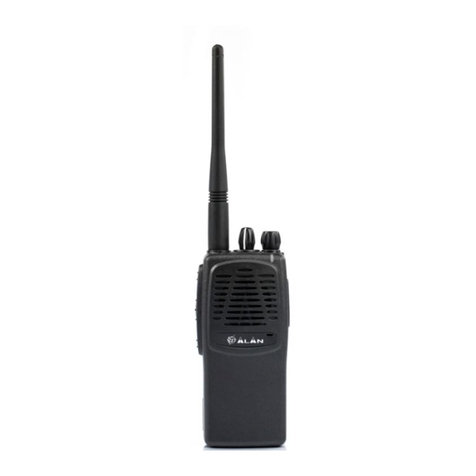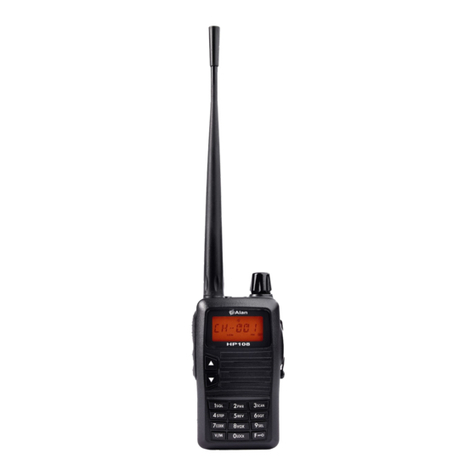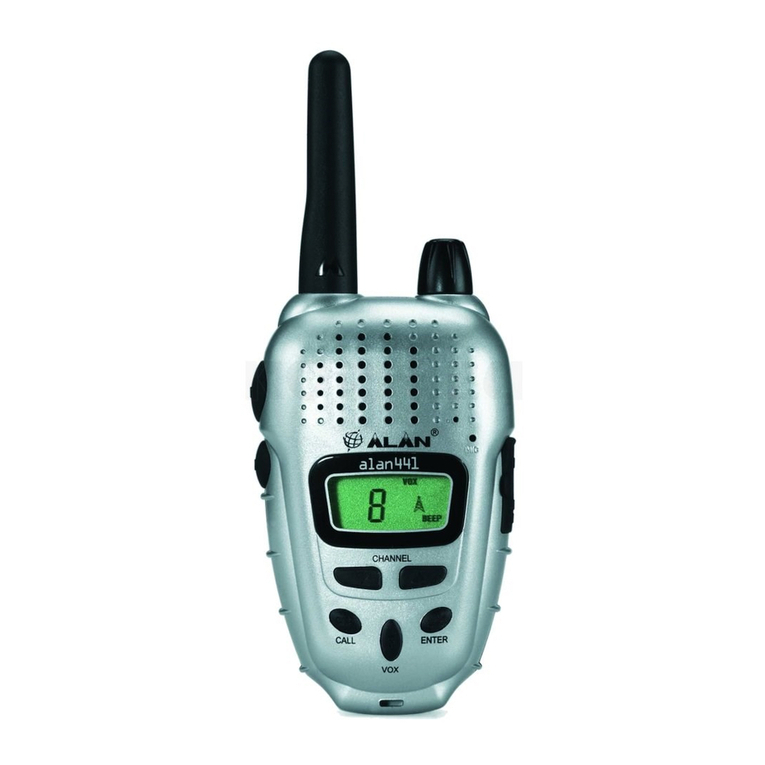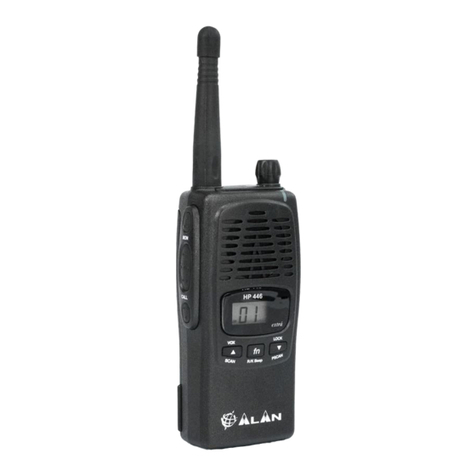
HP106 Service Manual
Page 5 of 12
The synthesizer is tuned in 5.00 KHz or 6.25 KHz step.
2.3.c Synthesizer
The frequency synthesizer is a large scale monolithic synthesizer integrated circuit Q429.
The synthesizer IC contains a dual modular prescaler, programmable divide-by-N counter, prescaler control
(swallow) counter, reference oscillator, reference divider, phase detector, charge pump and lock detector.
Also, included in Q429 are shift registers and control circuits for frequency controls and general device control.
RF output from the active VCO is AC coupled to the synthesizer Q429 prescaler input at Pin 8. The divide-by-N
counter chain in Q429, consisting of the dual-modulus prescaler, swallow counter and programmable counter,
divides the VCO signal down to a frequency very close to 5.00 KHz or 6.25 KHz which is applied to the phase
detector. The phase comparator compares the edges of this of this signal with that of the 5.00 KHz or 6.25 KHz
reference signal from the reference divider and drives the external charge pump (Q425 and Q426).
The synthesizer unlock detector circuit prevents the operation of the transmitter, when the phase lock loop (PLL)
is unlocked. The following discussion assumes the unit has been placed in the transmit mode. Q429 lock detector
Pin 7goes high when the PLL is locked. This high level is applied to Pin 21 of the microprocessor IQ9. A software
timing routing brings the RX/TX line low (Pin 29 of IQ9), feeding this signal through the switch/buffer IQ15. With
the RX/TX line low, Q223A is cut off and Q223B is biases on passing +5VTX to Q431B, it biases on Q430 to pass
switched TX B+ to the transmitter amplifier string which enables transmission.
When the PLL become unlocked, the lock detector at Q429 Pin7 will begin pulsing low. A RC circuit converts
pulsing low to a low level for the microprocessor. The microprocessor then changes the RX/TX line to a high, thus
signalling the other transistor switches to drive Q430 into cutoff which disable transmission. Therefore, the
transmitter remains disabled while the loop remains out of lock.
2.3.d Loop Filter
The Loop Filter, a passive lead-lag filter consisting of R461-R464 and C493-C495, integrates the charge pump
output to produce the DC turning voltage for the VCO. One parasitic pole, consisting of R461/C493 and RF
chokes L428/L429, prevent modulation of the VCOs by the 5.00 KHz or 6.25 KHz reference energy remaining at
the output of the loop filter. Direct FM is obtained for modulating frequencies outside the PLL bandwidth by
applying the CTCSS/DCS signals and the pre-emphasized, limited microphone audio to the VCO modulation
circuit.
The modulation circuit consists of R452,Q421 and C487.
2.4 Transmitter
2.4.a RF Power Amplifier
After the PTT is pressed, the +5VTX line switches to approximately 5V. Q419 is turned on enabling transmit VCO.
The VCO buffer, pre-driver, driver and power amplifier are biased on by Q430, which is biased on by the +5VTX
line switching to 5V. RF output from the transmit VCO(Q416) is applied to the VCO output buffer Q415.
Output from Q415 feeds the pre-driver amplifier Q413. The output signal from Q413 feeds the driver amplifier
Q412, whose output from the driver stage feeds the final RF power amplifier Q407 to produce the rated output
power of 2 watts. The output of the final is applied to a low-pass filter(C451, C452 and L413) and then to the
transmit/receive switch Q402. RF power is then fed to the antenna via the output low-pass filter consisting of
C401,C403,C405-C408, L401, and L402.
2.4.b Antenna Switching
Switching of the antenna between the transmitter and the receiver is accomplished by the antenna
transmit/receive switch consisting of diodes Q401 and Q402 in conjunction with C410 and R402. In the transmit
mode, switched TX B+ is applied through R420 and RF choke L414,hard forward biasing the two diodes on. Q402
thus permits the flow of RF power from output of the low-pass filter fed by the output amplifier to the output low-
pass filter. Q401 shorts the receiver input to C410, which is AC coupled to ground. L403, C409, C410 and R402
then function as a lumped constant quarter-wave transmission line, thus presenting a high impedance to the RF
output path, effectively isolating the receiver input and transmitter output sections.










